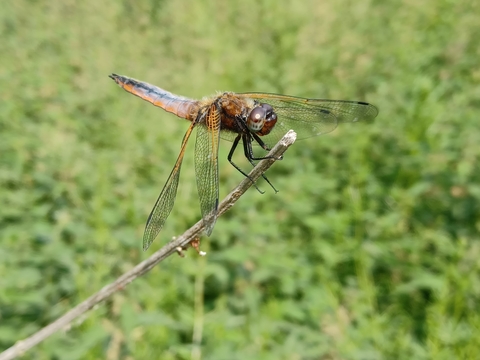As temperatures rise again, the insect life has responded. Many moth species are now on the wing, and some of you may have even spotted the scarlet tiger, a species expanding its range, and seen on nature reserves and in gardens this summer.
During our main 'June' moth survey, and we also recorded ruby tigers and many garden tigers. The latter is a declining species, sadly, but is doing very well at the Great Fen.
Another declining species is the enigmatic goat moth, one with a caterpillar that may live for three or more years inside tree trunks. The Great Fen is in one of the Country's strongholds for this moth, and we recorded both males and females (5 moths) this week.




